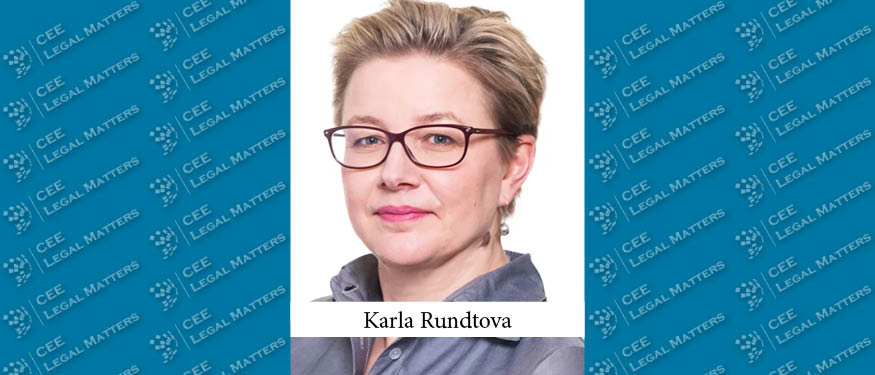The future is coming. Soon, people will order a car to send kids to school without the need for a driver. When you get out of a car at the main entrance of a busy shopping mall, it will park itself. Although those scenarios sound too good to be true, the automotive industry is predicting that automated driving will arrive within the next five to ten years.
There are five levels of driving automation. Levels 1 and 2 are classified as assisted driving, with the driver remaining responsible for any damages incurred in connection with the driving. Levels 3, 4, and 5 involve different levels of automated driving. Starting from Level 3, the automated driving system, instead of the driver, is responsible for the driving and its consequences under the prescribed conditition. At this level, the system takes full control of the driving, but when the system alerts the human driver to take over, the driver must do so. At Level 4, the system takes full control of the driving, but when the system disengages, the human driver must take over the driving task. At Level 5, the human driver never needs to take over.
There are currently two approaches, advocated by different industries, towards achieving the autonomous future. The most commonly-used approach is to evolve from a lower level of automation to higher levels of automation, and eventually reaching the stage of autonomous driving. This approach is commonly adopted by car manufactures such as Nissan, Volvo, GM, etc., which are believed to favor it primarily due to cost and product-liability concerns.
The other approach, more commonly adopted by techonology companies, is to skip Levels 1 to 3 altogether, and start at Level 4 with more expansive automated drivings solutions, such as LiDars. This approach is generally taken by Uber, Waymo, and several other techonology companies.
Many technology companies skip any involvement below Level 3 because of the unclear techonological boundaries between Levels 2 and 3. Concerned with product liability risks associated with Level 3 (where the Original Equipment Manager becomes liable for damages), a number of car companies are coming up with solutions just below it. In order to standardize and test the different features developed by different car companies, a Society of Automotive Engineers (SAE) subgroup has come up with a list of items to review.
Chinese Approach
China generally takes the same approach as the SAE in determining different driving automation levels. Unlike the self-certification approach taken by the US federal transportation authority, which involves few or no regulations, China takes a heavy regulatory approach, with various authorities competing against each other to make rules for the new business. In order to regulate autonomous/automated driving, it is important for the relevant authority to know the exact level of automation involved. Hence it is important to have a consistent testing standard to determine the level of automation in cars manufactured by each company.
Who Makes the Rules/Policies in the Testing of Automated Driving?
China’s Ministry of Industrial and Information Technology (MIIT) is the authority in charge of automobile homologation. The Ministry of Public Security (MPS) is in charge of highway safety and investigating automobile accidents. The Ministry of Transportation (MOT) is in charge of regulating the public transportation industry, including commercial vehicles. The three Ministries have joint responsibility for laying out testing responsibilities. On April 13, 2018, MIIT, MPS, and MOT jointly issued a Notice on Regulating (Trial Version) Road Test of Intelligent Connected Vehicles (the “Notice”).
Provincial governments are empowered to test and evaluate various intelligent/connected cars in accordance with regulations and policies adopted by the three Ministries and various industry associations. Each provincial government is responsible for issuing its own testing license in accordance with the testing procedure for the automated driving. As of today, Municipal Government such as Beijing, Shanghai, Chongqing, and Shenzhen had issued their own testing rules based on the Notice. Each Provincial regulation differs from others slightly, but this article will focus on the common requirements set by the Notice.
How a Company Can Get an Automated Driving Test License
Applicant Requirements
The applicant of the automated driving test must satisfy the following conditions:
- It must be a legal entity registered in the People’s Republic of China.
- It must be in a business related to the manufacture of intelligence-connected vehicles such as automobiles and parts, research and development, or experimenting or testing.
- It must have the financial strength to compensate any individuals who are injured or suffer losses to property as a result of the test.
- It must demonstrate the protocol for the evaluation of the autonomous features test.
- It can remotely monitor the testing vehicles on a real-time basis.
- It has the technical strength to record, analyze, and replay incidents encountered by the testing vehicles.
- Any other conditions required by law.
Driver Requirements
The applicant must provide human drivers for the automated driving test (“Drivers”), under conditions set out by the Notice. Drivers must work under an employment contract/labor service contract with the applicant and have been driving for more than three years. In the three years prior to the test, penalty tickets issued to Drivers must not equal or exceed 12 penalty points, and the Driver must not have seriously violated any traffic rules in the past year, including driving at more than 50% above the applicable speed limit or disobeying traffic lights. Drivers must not have any record of drunk driving or using controlled substances, and he or she must have no record for death or serious injury. The Drivers must have received training for autonomous driving, be used to automated driving, be familiar with the automated driving test method, and be capable of dealing with an emergency. Drivers must meet other conditions set forth by law.
The Testing Vehicle Must Meet the
Following Conditions
It cannot be registered.
- It must meet all mandatory safety standards. For individual standards that cannot be met because of the automated driving features, the applicant must prove that the relevant feature did not reduce the safety of the vehicle.
- It must have two operation modes: manual operation and automated driving. The vehicle must be able to safely, quickly, and simply switch between the two modes with appropriate warnings. The vehicle must be capable of being converted to human operation model at any time.
- The vehicle must have a log to record the conditions of the car, save data, and monitor the online features. It must be able to upload certain information on a real-time basis and to automatically save the following data in the 90 seconds prior to any incident or malfunction of the vehicle:
- The control mode of the car
- Location of the car
- Speed, acceleration, and other status of the car
- Environment and responsiveness
- Light, traffic information, and responsiveness
- 360-degree information recorded by cameras
- Any video and audio information reflecting the interaction between the Driver and the system
- Any instruction received remotely by the vehicle; and
- Any malfunction information.
- The testing must take place on a closed road or other designated place.
- The testing must be made through a third party that is certified by the competent authority to do the testing.
Procedural Requirements
The applicant must submit an application to the provincial authorities, with details that vary from province to province. As a general principle, the following documents must be included in the application:
- Basic information on the applicant, the vehicle, and the Driver;
- If the vehicle is a domestically produced vehicle, the applicant shall submit the quality certificate of the whole car. For those cars that have not passed homologation, the applicant must provide a quality certificate and compulsory testing report issued by a third-party lab recognized by the State. If the vehicle is imported, the applicant shall provide the CCC certificate and other documents issued by Customs, Immigration, and Quarantine.
- A declaration that the automated driving feature does not lower the vehicle’s safety.
- A certificate that the vehicle has passed a safety inspection.
- Materials establishing that the applicant has tested the vehicle on closed roads or areas or other designated areas.
- A report on the automated driving features issued by a certified third-party testing firm.
- A test plan, including testing roads, testing period, testing items, testing protocol, risk analysis, and action plan.
- An insurance policy with no less than RMB 5 million coverage.
If the competent authority in a province accepts the application and issues a notice to a testing vehicle, the notice will be properly filed with MIIT, MPS, and MOT and be made available to the public.
Generally speaking, testing cannot exceed 18 months. The applicant needs to file a request with the authority for any change made to the basic information on the notice. Once that request for change is approved by the authority, the applicant can continue with the testing. A notice is only valid within the jurisdiction of the competent authority. If the vehicle is driven out of the jurisdiction, it needs to apply for a new permit for testing with the authority that has the jurisdiction over the designed area.
Applicants must submit a report every six months. The final report must be submitted within one month of the testing’s completion. We will see in the second half of 2018 when the authority can release the report. With all data reports submitted by different OEMs, the authorities will need to understand how to read and analyze the data that arises. More common approaches/international discussions on how to analyze data are expected to develop.
By Maggie Pei, General Counsel, SF Motors’ SOKON Intelligent Vehicle Business Unit
This Article was originally published in Issue 5.10 of the CEE Legal Matters Magazine. If you would like to receive a hard copy of the magazine, you can subscribe here.
















